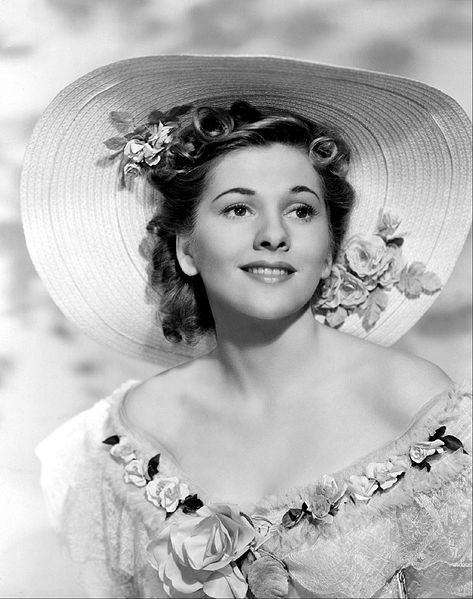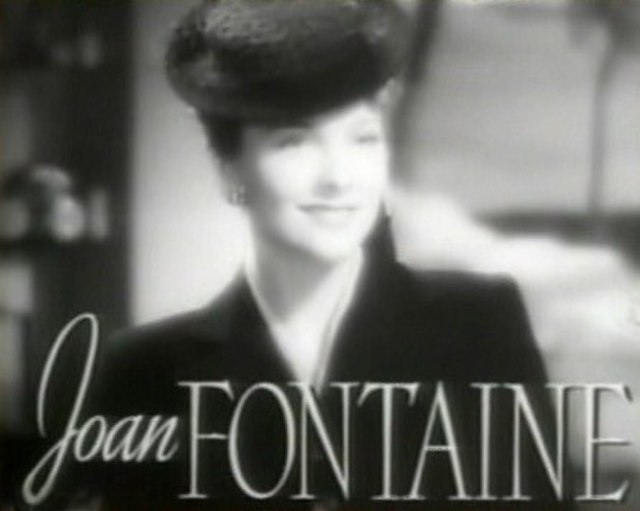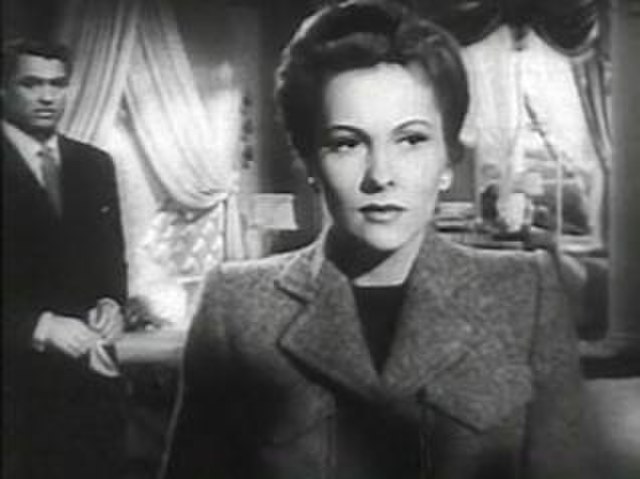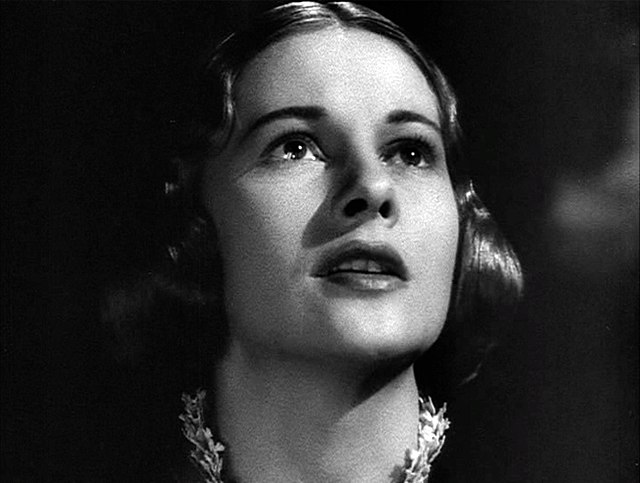Joan de Beauvoir de Havilland, known professionally as Joan Fontaine, was an English-American actress who is best known for her starring roles in Hollywood films during the Golden Age of Hollywood. Fontaine appeared in more than 45 films in a career that spanned five decades. She was the younger sister of actress Olivia de Havilland. Their rivalry was well-documented in the media at the height of Fontaine's career.
Fontaine in 1940
Trailer for The Women (1939)
With Cary Grant in Suspicion (1941)
Jane Eyre (1943)
Dame Olivia Mary de Havilland was a British and American actress. The major works of her cinematic career spanned from 1935 to 1988. She appeared in 49 feature films and was one of the leading actresses of her time. At the time of her death in 2020 at age 104, she was the oldest living and earliest surviving Academy Award winner and was widely considered as being the last surviving major star from the Golden Age of Hollywood cinema. Her younger sister was Oscar-winning actress Joan Fontaine.
de Havilland in a publicity photo, 1938
Lundblad's Lodge, in Saratoga, where the family lived for a while
De Havilland in the stage play Alice in Wonderland, 1933
Publicity photo, 1935








